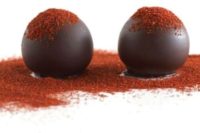Trying to Build Strong Bodies 12 Ways
Internet-savvy consumers who have the time and patience to wade through MyPyramid.gov can find out exactly what type and how much grain-based foods they should eat daily based on U.S. Dietary Guidelines released earlier this year.
Unlike the old Food Guide Pyramid, which was designed in 1992 and incorporated the old dietary guidelines into a one-size-fits-all format, MyPyramid.gov provides 12 versions of the food guidance system, based on the amount of calories consumed and the amount of exercise done on a daily basis.
Consumers can find out which pyramid is best for them by simply going on the Web site, clicking “My Pyramid Plan” and typing in their age, gender and activity level.
No longer does the government recommend that all Americans should eat six to 11 servings of grains daily. Instead, the new site suggests that a 40-year-old male who exercises less than 30 minutes a day consume 8 oz. of grains based on a 2,400-calorie diet. Or, if the same person exercised more than 60 minutes a day, he could eat 10 oz. of grains as a part of a 2,800-calorie regimen, according to the Web site.
At the same time, a 40-year-old female who exercises more than 60 minutes a day can consume 7 oz. of grains as apart of a 2,300-calorie diet. In all cases, the portal recommends that half of the grains be whole grains.
In addition to being one-size-fits-all, U.S. Department of Agriculture officials noted that the old pyramid didn’t realistically or clearly define serving sizes. Consumers had to look up serving sizes that did not realistically reflect how food was being packaged or served.
“The new guidelines provide exact amounts of foods in easier-to-understand terms, such as ounces, cups, pieces or slices,” said Eric Hentges, director of the USDA’s Center for Nutrition Policy and Promotion, which was in charge of designing a symbol and Web site that is consistent with the 2005 U.S. Dietary Guidelines.
“Who knows what a serving size is? It’s whatever I put on my plate. The servings differ for you than for your spouse, maybe,” Hentges said during a conference in mid-April when USDA rolled out the long-awaited symbol.
In all, the government’s current guidelines list 23 general recommendations and 18 suggestions for children, older people and special populations, which is too much information to be put into one symbol, Hentges added.
As a result, USDA came up with the “deliberately simple” rainbow-colored symbol that is meant to encourage consumers to make healthier food choices and to be active every day.
In developing the symbol, USDA and its public-relations firm took the old pyramid and flopped it on its side. Instead of horizontal recommendations, with grains being at the base of the pyramid, MyPyramid contains six different-sized and different-colored bandwidths. The bandwidths run vertically with the largest part on the base and the smallest parts on the top, suggesting all foods are good for you but some should be consumed in greater quantities than others.
Specifically, the wider base of the bandwidth symbolizes greater consumption of wholesome and healthful food alternatives with little or no solid fats or added sugar. The narrow top stands for eating less of foods with high calories.
“The concept here is you need to spend your calories wisely,” Hentges said. “You don’t have a lot of extra calories unless you include more physical activity in your life.”
The widest bandwidth represents grain-based foods while the thinnest one represents fats and oils. In the new pyramid, orange stands for grains, green for vegetables, red for fruits, yellow for oils, blue for dairy foods and purple for meats, beans, fish and nuts.
A month after its debut, the jury is still out on the MyPyramid symbol, which can be used on snack and bakery food packages for free. Ironically, both the strengths and weaknesses of the MyPyramid are its simplicity.
On one hand, the graphic shows a person running up the steps and the tagline “steps to a healthier you,” which clearly suggests that exercise should be part of a regular lifestyle. On the other hand, the pyramid itself doesn’t provide enough information on what foods to eat and how much. Specifically, many versions of MyPyramid on the Web Site don’t identify what the band colors mean. Without this information clearly labeled, critics charge, the MyPyramid symbol fails as both a communications and educational tool.
Proponents counter that food companies need to label what the bandwith stands for and urge consumers to visit MyPyramid.gov, which is what many Americans have done. In the first week following its mid-April debut, the Web site recorded more than 200 million hits.
Additionally a survey conducted in late April by Opinion Dynamics indicated that 40% of Americans, or nearly 90 million people, have seen the pyramid. People over 55 and with more than $75,000 in annual salary are more likely to have seen it while fewer than 30% of minorities have done so. Women tend to like the new design more than men, the survey found.
Overall, industry response to the new pyramid has been generally positive, partly because grains — especially whole grains — are positioned in good light. The industry also is relieved that MyPyramid stressed moderation instead of labeling some foods as good for you and others as bad for you. Instead, USDA allows consumers to eat a small amount of “discretionary” foods each day.
“At a time when the American public is getting over its low-carb hangover, it is important that the USDA is using the new guidance system to reinforce basic nutritional facts and sound science,” said Judi Adams, president of the Grain Foods Foundation.
“Whole grains are the new ‘it’ food, having been shown to help prevent the risk of Type 2 diabetes, obesity, heart disease and some cancers,” she added. “At the same time, enriched bread and grains are an essential source for the daily requirements of folic acid, riboflavin, niacin, thiamine, as well as iron, for all Americans, especially women during their childbearing years.”
Additionally, MyPyramid.gov helps consumers take small steps toward living a healthier lifestyle. Gary Prince, president of George Weston Bakeries and chairman of the American Bakers Association, noted that the Web site’s interactive approach creates “a wonderful opportunity to get consumers of all ages energized and involved in making healthy eating choices.”
In addition to MyPyramid Plan, the Web site includes MyPyramid Tracker that provides more detailed information on a consumer’s diet quality and physical activity status by comparing a day’s worth a food eaten with current nutrition guidance. It also offers suggested nutritional and physical activity ratings for maintaining weight or losing it.
MyPyramid.gov also lists helpful tips for losing weight and information on a wide variety of issues, such as obesity, diabetes, heart disease and other illnesses.
As its Web site continues to evolve, USDA plans to add a Hispanic alternative as well as a child-friendly version of MyPyramid. For those not connected to the Internet, posters and other literature will be available in the near future.
Obituaries
Ray Thelen, bakery technologist and author of the renowned “Ask Ray” column, passed away on May 14 at the age of 86 at his home in San Diego. Born on October 26, 1918, Thelen began working in bakeries when he was eight years old and eventually became one of industry’s foremost problem-solvers, especially in the area of formulation. A veteran of the Navy during World War II, he worked for Dinkel’s Bakery, American Bakeries, Pillsbury and others before joining Mother Murphy’s Laboratories in 1966, where he served as executive vice president. Thelen was member of the American Society of Baking and a long-time active contributor to the Biscuit & Cracker Manufacturers’ Association.
Alvin Christian Formo, founder and CEO of Formost Packaging Machines, Inc., passed away on April 19 at the age of 85. Born August 26, 1919, Formo served as a technical sergeant in the Army during World War II. Seeing growth possibilities in the poly-bagged bread market, he began Formost Packaging Machines, Inc., in 1964. He was active in the American Institute of Baking, the University of Washington Alumni Association, the Seattle Chapter of Rotary and BEMA, the baking industry suppliers association. Formo was given a lifetime achievement award by BEMA in 2002.





